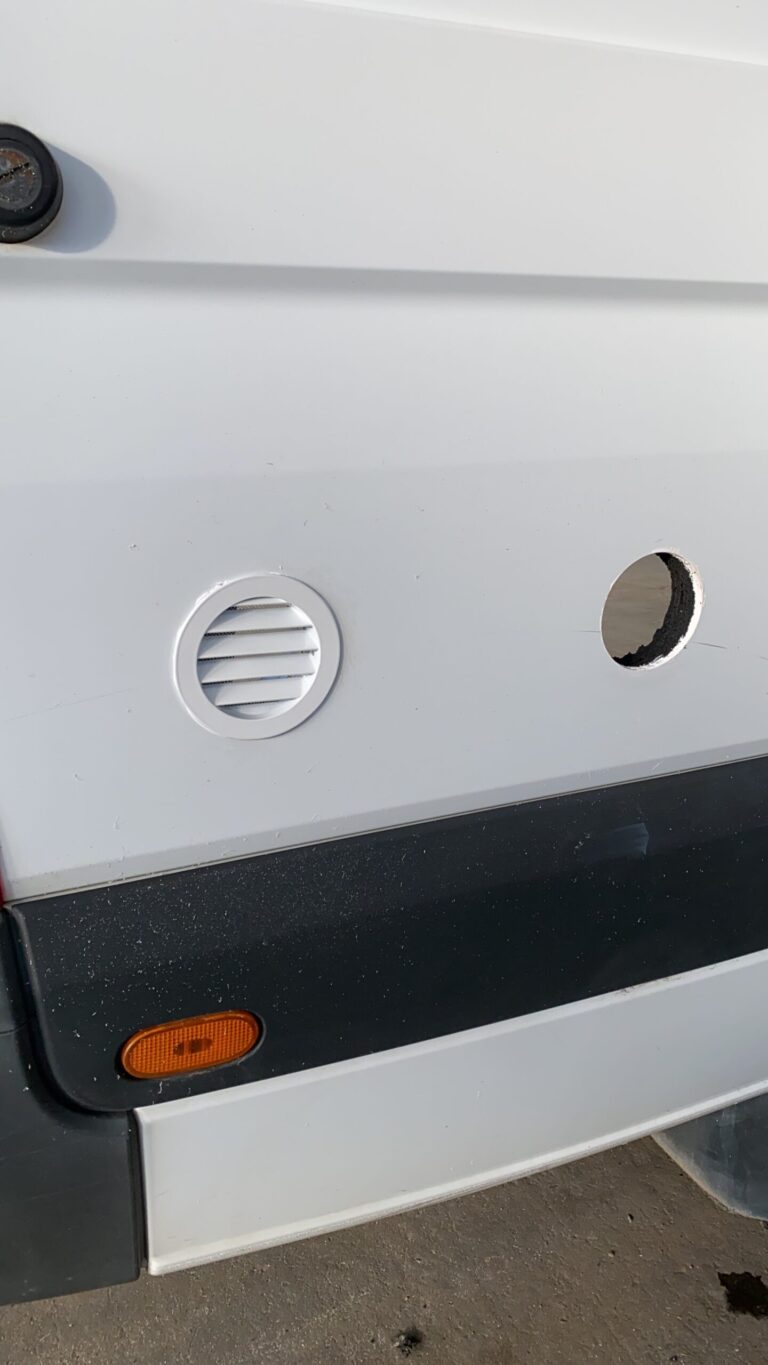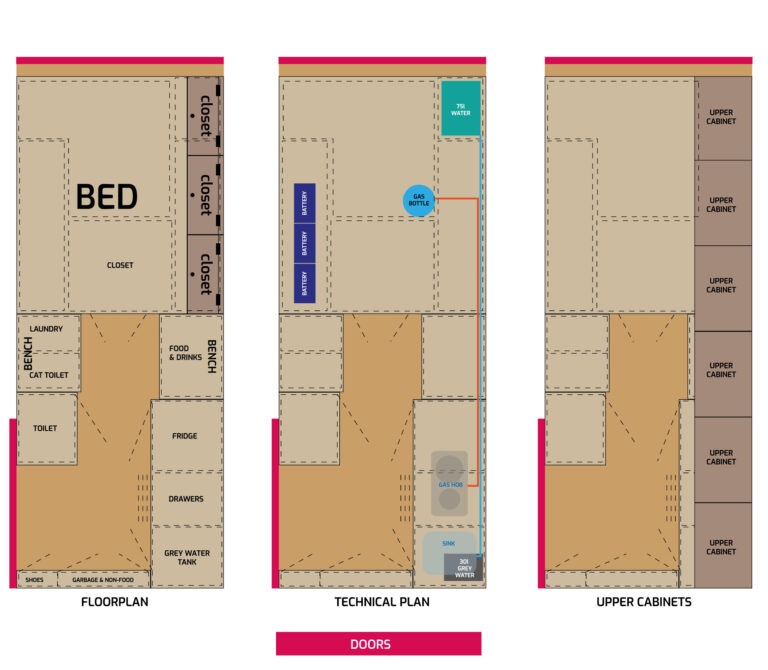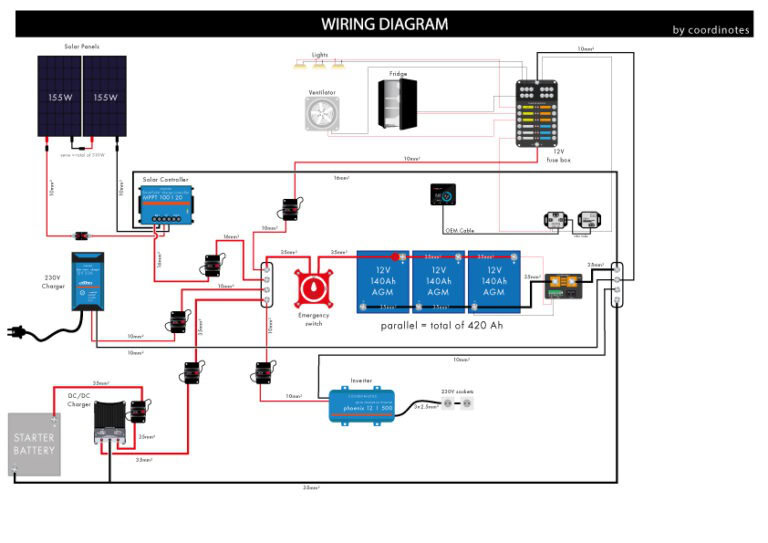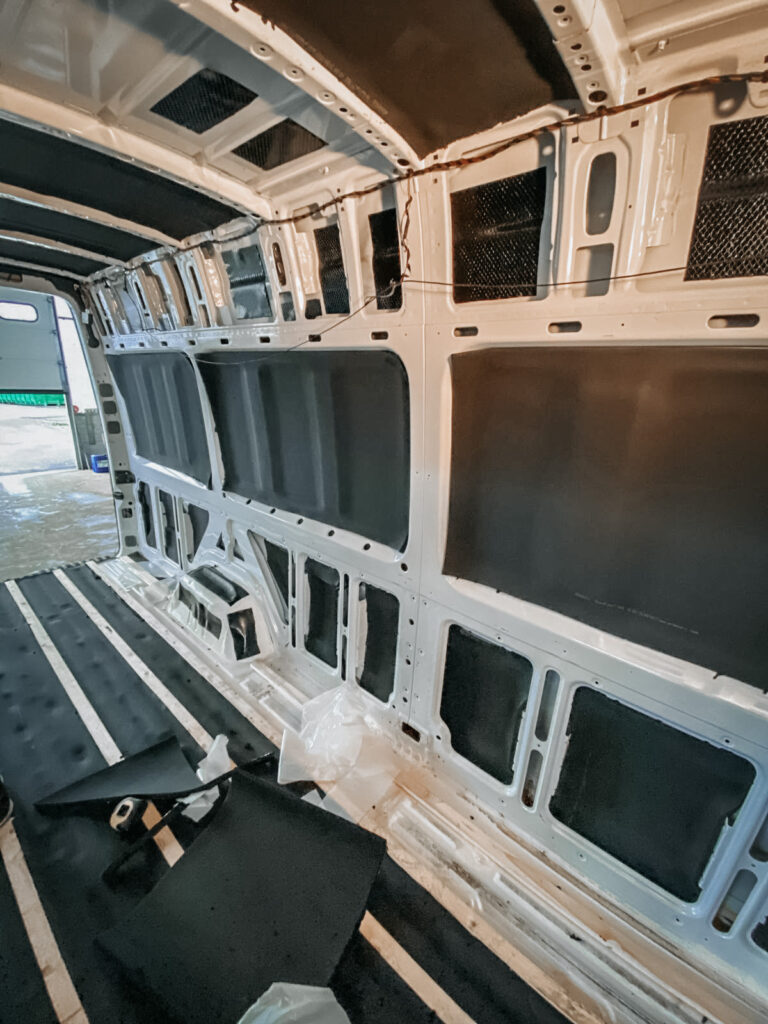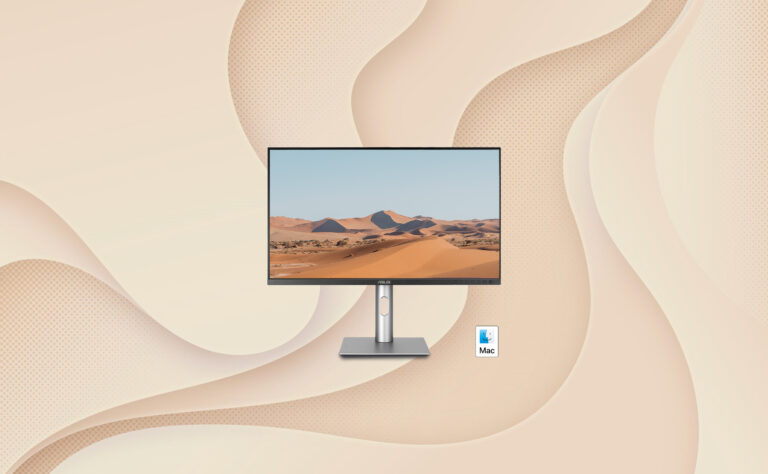Overview
Camper insulation: your key to year-round comfort
Work equipment for this phase
Wooden beams
Utility knife or scissors
Straightedge or ruler
Pencil
Saw
Drill
Svrews
Plywood sheets
Vinyl floor
Vinyl glue
Make the floor plate
For this it’s best to use thick plates such as plywood (12 or 18 mm), as this will also be the foundation to which your furniture will be attached. Make sure the plywood sheets are wide enough to rest on the multiple support beams of the base. In this way pressure is divided equally.
Lengthwise one sheet will probably not be big enough, so you will have to put several sheets in a row.
First place the plywood sheets next to each other outside your van so that you can draw out the shape of the floor in one go. You can use the original floor plate as a template. If the original floor plate is no longer usable, you can make a mold yourself with cardboard or the like. Another option is to measure and mare the dimension very accurately. After the shape has been traced on the plates, it is time to cut it out. For the straight parts you can use a circular saw, but the curved parts are better cut out with a jigsaw. Finally, you can sand the sawn edges to make them smoother.
When this is done, you can screw the plywood plate on the beams in the van.
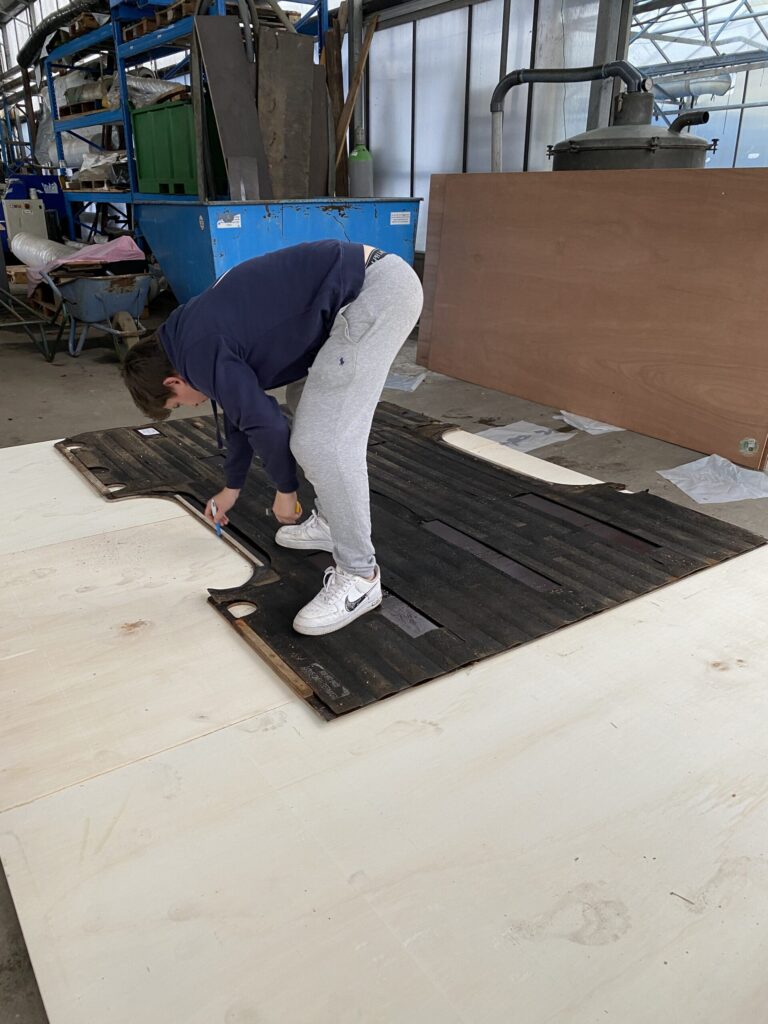

Build strong walls
We have attached wooden beams to the bodywork for the walls of our camper. Here we have screwed 5mm plywood so that everything is nicely covered. You can decide from here if this is enough and paint. We personally thought it was better to place another layer of slats on top, because these lines also give more depth in the camper.
Also take into account where you already have to lay cables for the electrical part. We have already run the cable of our fan and lighting behind the 5mm plywood so that it is certainly not visible when everything is finished. For the rest of the cables we worked through cable ducts behind and between our furniture. These are not immediately visible, but we are glad we did it this way as we can now very quickly add or remove cables.
And don’t forget to make the bridge between the outside ventilation grill and the inside wall.
Our old ceiling can still be seen in the photos below, which has been replaced by a new ceiling since 2022. More info later!
Tip!
When you place a support beam, make sure that the beam itself is wide enough so that you can attach two consecutive panels to it. Think carefully about the placement of the support beams so all panels can be properly supported and secured.
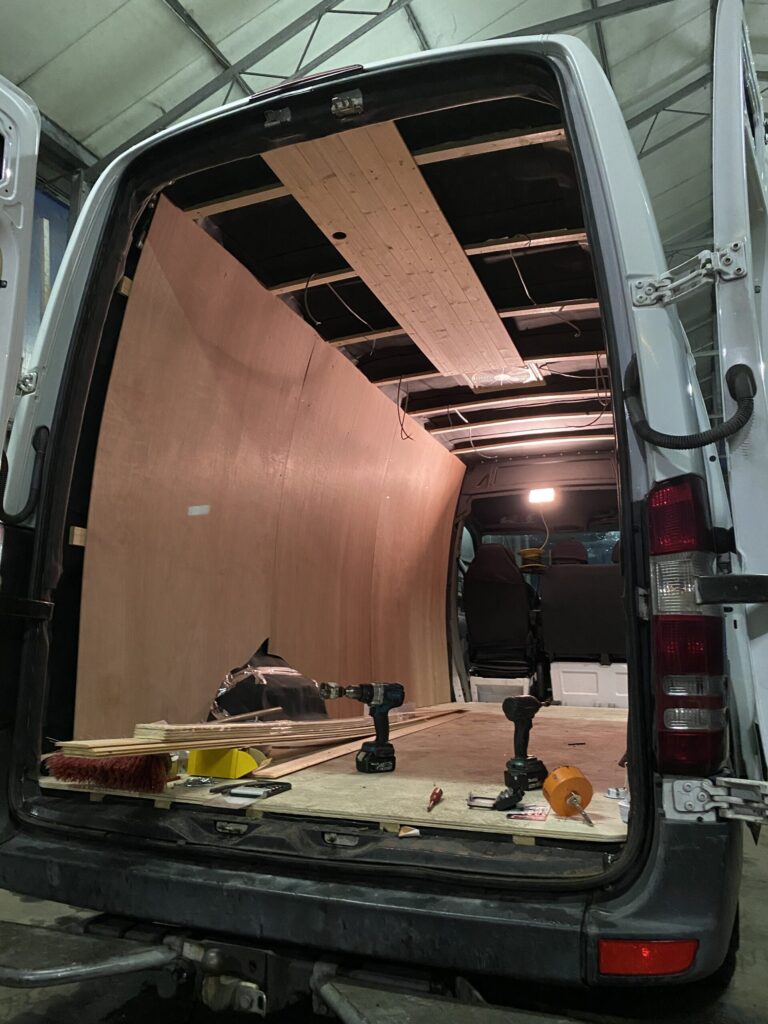
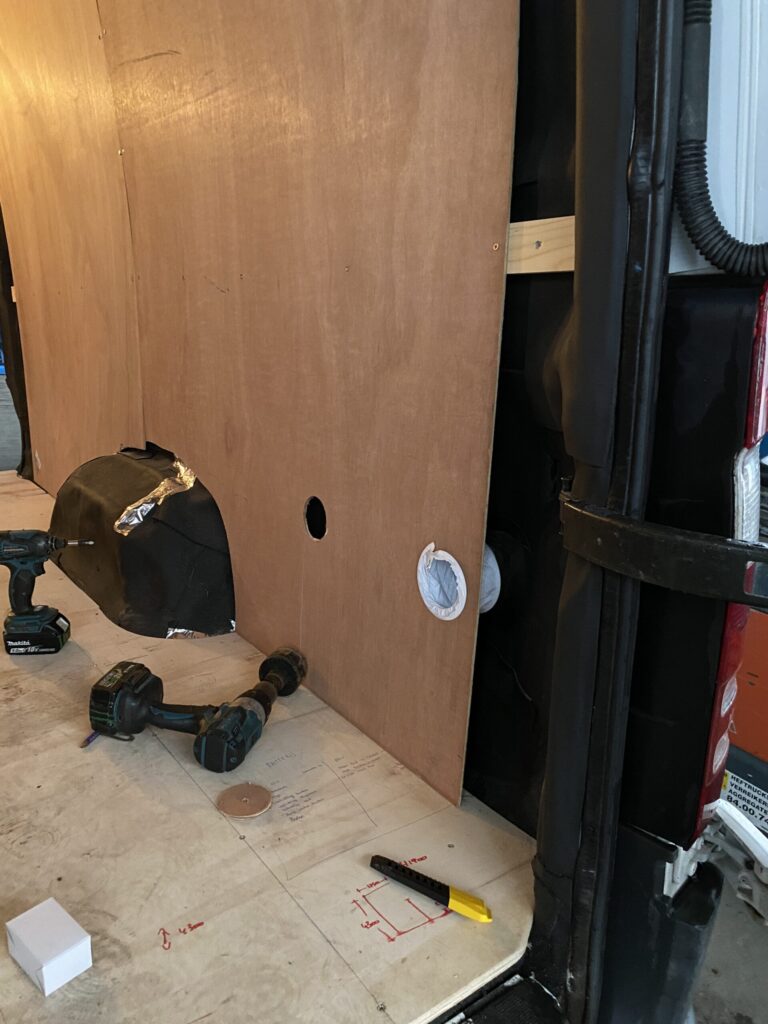


Finish the floor
When the walls are there you can cover the floor with vinyl, the advantage of vinyl is that you have different colors and styles and that it is very thin and flexible. What is very important in your camper!
We have opted for a herringbone motif, if we had to do this in a different material, it would be more difficult to maintain.
Using your template that you used earlier to make the floor plate, you can now also cut out the floor from the vinyl roll. This can simply be cut out with a cutter. Afterwards you check if everything fits and then you use a vinyl glue to attach it to the plywood bottom plate.
Tip!
In our local DIY store we also found a metal profile to finish our floor plate on the visible sides. We sawed these to size and screwed them in.

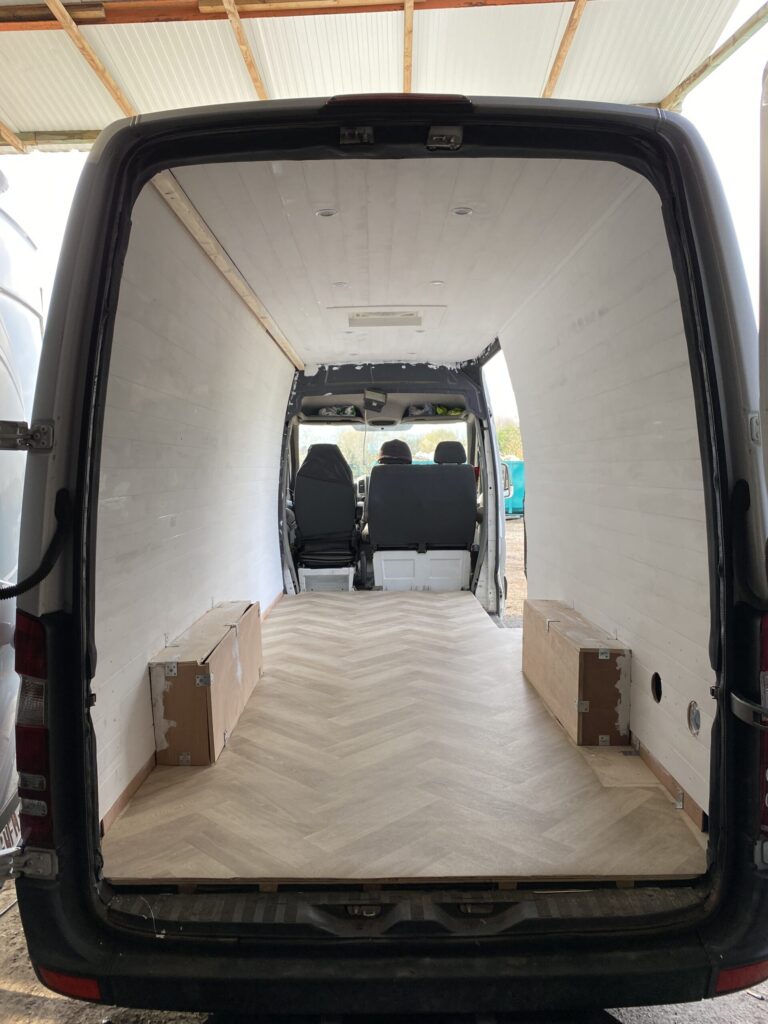
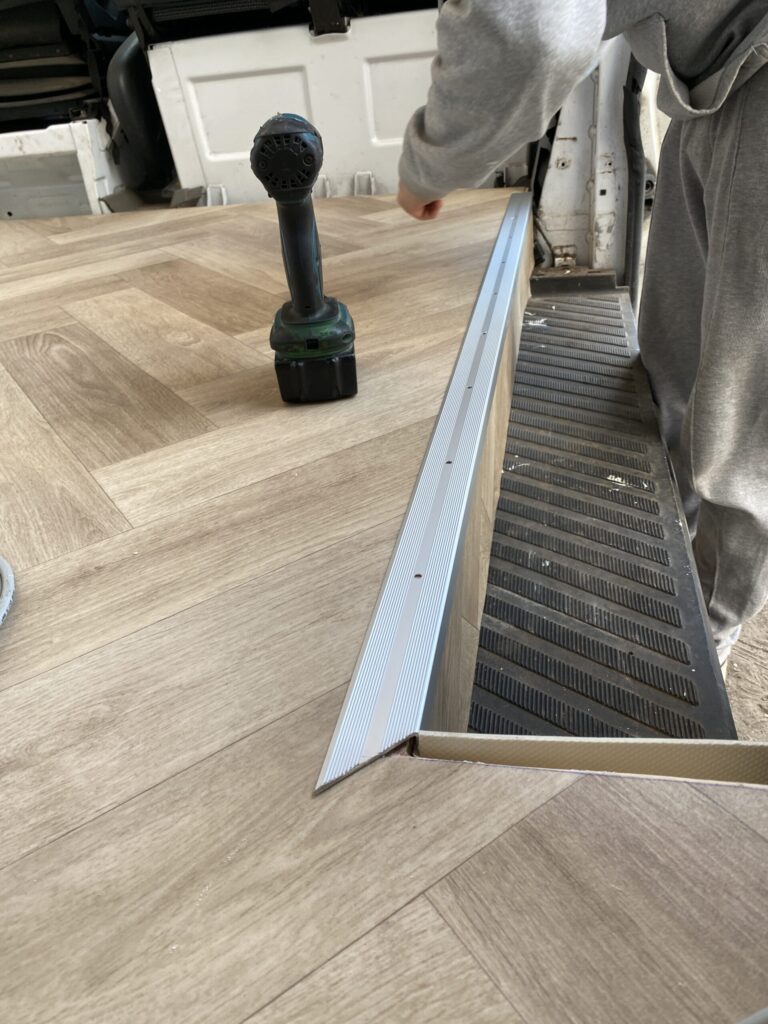
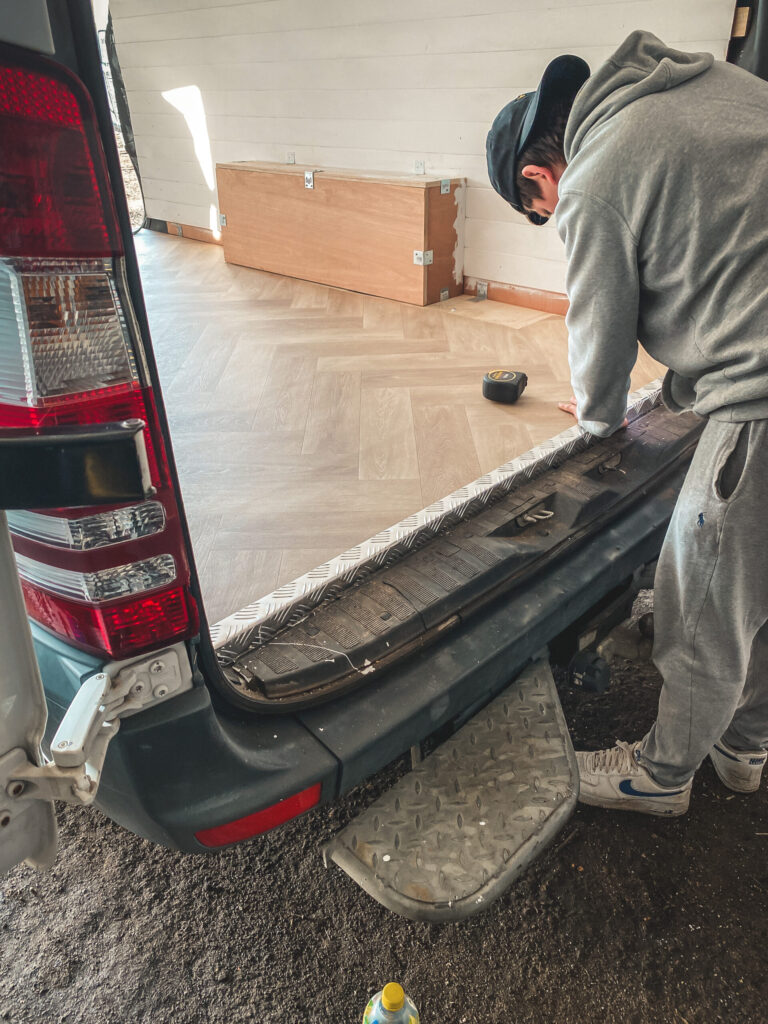
Disclaimer
This blog is a guide on how we converted our camper. We are not responsible for any problems or damage during the conversion of your camper.
The information on this blog is to be used at your own risk and your own judgement. You assume full responsibility and liability for your own actions.
Win-Win for everyone
Did you know that, if you buy or book something through our links, we receive a small commission?
However, you still pay the same and therefore have no extra costs! So a win-win for everyone. This way, we can continue to add even more travel inspiration and tips to this blog for your next adventure. Thanks a lot!
Thank you for visiting our blog
We hope you find our free travel guides and tips useful. If you want, you can support us virtually by ‘buying us a coffee‘.
Every contribution, no matter how small, is greatly appreciated and will help us continue to share our passion with you and grow this blog.
This blogpost was about:

